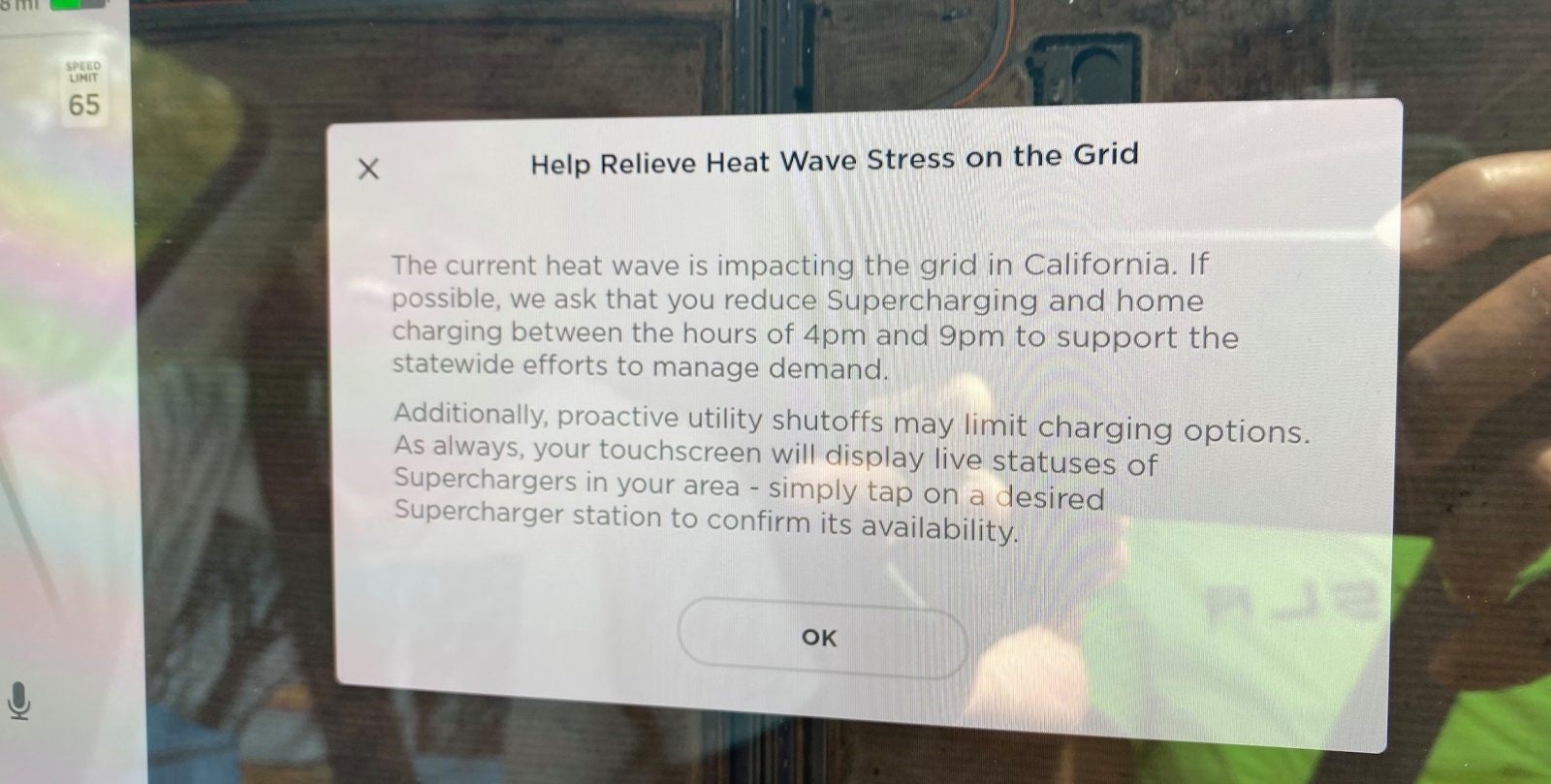On Monday this week, I got into my electric car and the following image popped up.

Image courtesy of electrek
My car was encouraging me to shift my charging patterns. Why?
California, along with large chunks of the rest of the West, is experiencing one of the worst heat storms on record. The weather pattern was abnormal, with less wind to cool people off at night. Since the heat storm hit most of the West, the ability to import power from our neighbors was also greatly compromised. The weather pattern also created over 11,000 lightning strikes, which sparked several wildfires throughout the state. In turn, those wildfires resulted in changed grid operations. Last, with more people staying home due to the Covid-19 pandemic, energy demands are higher and different than normal. As a result of all of these factors, the state’s electric grid operator issued an emergency alert, which triggered the state’s first rolling blackout in nearly two decades.
The situation resulted from a combination of a series of unusual events, some poor planning and unexpected generation shortages. The state’s electric grid operator, the California Independent System Operator or CAISO, is still figuring out the details. It appears the blackout was caused in part by a natural gas power plant that unexpectedly shut down because it could not handle the heat. California does plan for extreme weather events and has a “reserve margin” of electric generators to prevent this very problem; there should be an extensive post-mortem trying to figure out what went wrong and what regulatory and infrastructure changes are needed.
After the first blackout, the state’s grid managers continued to warn that energy supply would be insufficient to meet the state’s higher demand. The emergency alerts continued through the weekend and into the next. My car was telling me to reduce my energy consumption in order to prevent another blackout.
This is part of a statewide campaign called a “Flex Alert” – which is a way to quickly shed demand for electricity by asking individuals to temporarily turn-off what they can. The response was so robust that CAISO was able to flatten the curve for demand like never before. Thanks in part to the message I got in my car, the blackouts stopped.
These flex alerts are a great measure of last resort, but the state should never use them as a long-term strategy. We need to create a more reliable electricity system that can handle high demand from increasingly unpredictable weather, and to help us to tackle the changing climate that is at the root of all of it.
During this conversation, some have inaccurately pointed to renewable energy causing the unstable grid conditions. That was quickly disputed by the CAISO. Renewables were not the problem in this situation; they provided the reliability. California lawmakers should reject the calls for increased reliance on natural gas fired generation to support reliability. Southern California Gas Company recently sued the California Energy Commission to keep gas part of the conversation, and given the failures of natural gas fired generation this past week, that argument looks to have very little merit.
Let’s be clear: California needs to make major new investments in the electric grid over the next decade to meet our clean energy objectives. Next month, each of the state’s load serving entities will submit new procurement plans to avoid future generation gaps. As we plan and add this new generation, we need to ensure that we have an affordable, clean and reliable electric grid. We need to reject the false argument that fossil fuels are the most reliable way of generating electricity – this week has proved the opposite is true.









